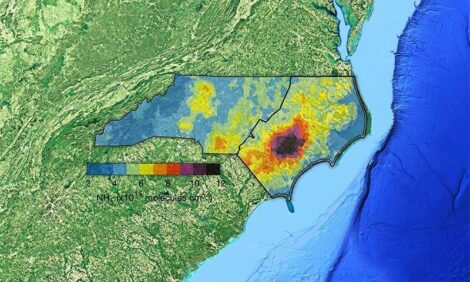



Experts Speak Out On Erysipelas
By Dennis Dipietre, PhD, Agriculture Economist/Swine Industry Consultant and published by Schering-Plough Animal Health - Perhaps the greatest single challenge to pork producers attempting to establish long-term success, has been the need to create value while carefully monitoring and controlling cost.Introduction
Creating value while controlling cost separates successful producers from those who exited the industry. Controlling cost is largely about minimizing waste or systematically eliminating excess or unnecessary inputs.However, a onedimensional, non-integrated understanding of cost has led to a host of problems for many producers.
On well-managed farms which are consistently profitable, you will notice a fixation on best cost opportunity rather than on least cost based on fear and scarcity. As memories of erysipelas outbreaks fade and the pressures of short-term cost minimization increase, we often see the elimination of erysipelas vaccine from control programs. Given the high costs of an outbreak to a production system, yearround vaccination provides affordable insurance and a key investment in value creation especially when every penny counts.
Erysipelas And Its Economic Impact
In the last 15 years, the swine industry in the United States and throughout much of the world has undergone tremendous positive change.Much of this has been driven by the ability of the production sector to employ scale without consistent catastrophic disease outcomes.This has been accomplished by the implementation of segregated early weaning and multi-site production in combination with advances in swine medicine and vaccines.The ability to employ scale resulted in a tremendous inflow of new capital and investment that brought about new and better ways of producing high quality and safe pork for consumers throughout the world.
Debunking The MythAs the pressures of short term cost minimization increase, we often see elimination of erysipelas vaccine from control programs.This is driven by two problematic assumptions. |
These measures,while providing important information to the producer, are not comprehensive assessments of system production or financial performance although they are often used that way. In reality, they are more often than not, subsystem measures. The popularity of subsystem variables for guiding investment and adjusting procedures onfarm is largely driven by the segregation of sites. When multi-site production protocols became popular, with their dramatic reduction in mortality and morbidity, the major units of production (breeding/gestation/farrowing, nursery and finishing or wean-to-finish) began to be viewed as separate systems with their own rules for optimization.
Maximizing or minimizing key production and cost metrics within the subsystem location along with stimulating the same with production bonuses and penalties often serves to discourage integrated thinking. For example, the animal on its way to the packer is essentially and incorrectly viewed as the product of the finisher, rather than the product of the entire system of production.
Relatively recent research and on-farm experience is demonstrating again that impediments to realizing full economic performance and value of market hogs often begin in the sow herd and is carried throughout the grow-finish stages.The typical sub-system measures and metrics specifically exclude any reference to metrics, outcomes, costs and returns outside the sub-system for which they are calculated.Therefore, the economic consequences of an outbreak of erysipelas which can affect both the sow herd and the grow-finish stages causing dramatic attrition and degraded food quality in market animals is often underestimated.
The challenge of creating value while controlling cost is a major hurdle for modern pork producers. Creating value is the process of organizing the productive inputs and human capital of the farm to produce high quality, safe food with the attributes most in demand for a growing domestic and global market. Controlling cost is largely about minimizing waste or systematically eliminating excess or unnecessary inputs.However, a one-dimensional, non-integrated understanding of cost has led to a host of problems for many producers.On wellmanaged farms which are consistently profitable, you will notice a fixation on opportunity rather than on fear and scarcity.
It is amazing to find pervasive thought patterns about cost in the industry which results in the removal of basic, inexpensive vaccinations such as the erysipelas vaccine even in high profit periods or employing seasonal use of key vaccinations which could more than pay for themselves year around if they prevent an outbreak. Part of the problem with evaluating the risk of seasonal use or eliminating altogether the vaccination for erysipelas is underestimating the true cost of an outbreak. Failure to vaccinate sows and young pigs opens the farm to more than the cost of treatment in a resulting outbreak.What are some of the costs which producers often fail to consider when deciding to remove the erysipelas vaccination program from their herd protocols?
First, there is the problem of the disease itself. The organism which causes erysipelas in swine cannot be removed from the production environment. It is estimated that up to 50% or more of a herd will carry the organism in their tonsils or other lymph tissue.
When the animals are suddenly challenged by changes in their production environment or by the stress of another disease such as PRRS, the likelihood of an (erysipelas) outbreak is increased. Erysipelas is a disease both of the sow herd and the growing pig and therefore degrades performance at a critical time in the life of the animal when investment in the pig is already extensive.While sudden death with its immediate, total loss may be the first sign of an outbreak, sub-clinical outbreaks are also common.
| Producers fail to consider the following when deciding to remove vaccine programs: Cost of disease Cost of subclinical disease and morbidity Effects of employee morale on farm performance Impact of delivering a “degraded” product to market Welfare of diseased animals |
Antibiotic use is coming under more and more scrutiny in animal production systems and may be severely limited in the near-term future. Vaccination saves antibiotic use for those clearly limited but necessary treatments times when no other choice is available.
Second, the cost of morbidity is often underestimated in today’s herds. Because production in the modern industry is carried out on sub-system sites, very few producers use measures of productivity which span the entire production system. A measure like standard pigs sold without discount/mated female/year is not normally calculated by most producers but if it were, the insights would be immediate.
Most producers view pigs weaned/mated female/year coupled with wean-to-finish mortality which masks the severity of attrition causing diseases such as erysipelas. Erysipelas can dramatically affect profitability by decreasing standard pigs marketed/mated female/year with or without dramatically changing finisher death loss or pigs weaned/mated female/year.
Third, most producers underestimate the effect on morale of high quality teams of farm production workers and contract growers who are forced to work long and hard hours treating a problem like an erysipelas outbreak. Individual animal treatment in the finishing phase is time-consuming and potentially dangerous to farm workers. Labor spent fixing and treating an outbreak is labor lost to creating high value, high quality pork. It is labor assigned to a salvage operation rather than to creating value.
One of the key characteristics of a high performing team is the positive feedback they receive in terms of high, positive outcomes from their time, effort and ingenuity. One of the most important requirements for recruiting and retaining a high quality team in the production labor force is that they be consistently rewarded not only monetarily but with outstanding results which bring high workplace and job satisfaction.There are few things more discouraging than working many extra hours to fix something that could have been prevented at very little cost. In addition, the possibility of worker infection places employees at unnecessary risk.
Fourth, a pig delivered to market with erysipelas results in a degraded product for the packer and risks the infection of healthy pigs which may be mixed together with infected ones in the same holding pens at the packing plant.This is a particular risk when resting periods are extended over a weekend. Plant workers are also exposed to the possibility of infection which can cause painful skin lesions and in rare cases serious systemic disease.
Lastly, there is an increased focus on animal welfare issues especially in modern, larger scale production systems. It seems very likely that animal welfare assessments and audits will soon be demanded by retailers.High fever, loss of appetite and chronic joint problems including arthritis brought on by a serious erysipelas outbreak cause suffering in swine as well as decreased economic performance.Much of this is avoidable with a simple, cost effective vaccination program. Disease control is not a short-term strategy and should not be driven by “driving costs out of the system”.
September 2006








